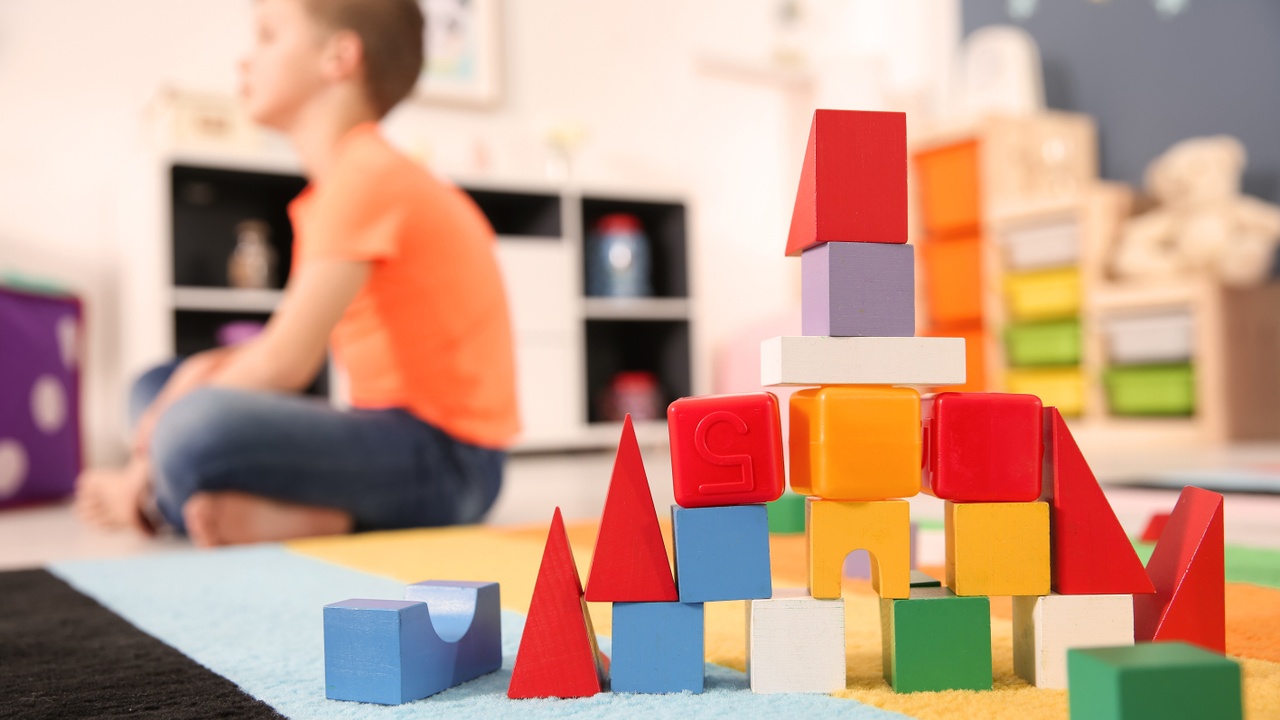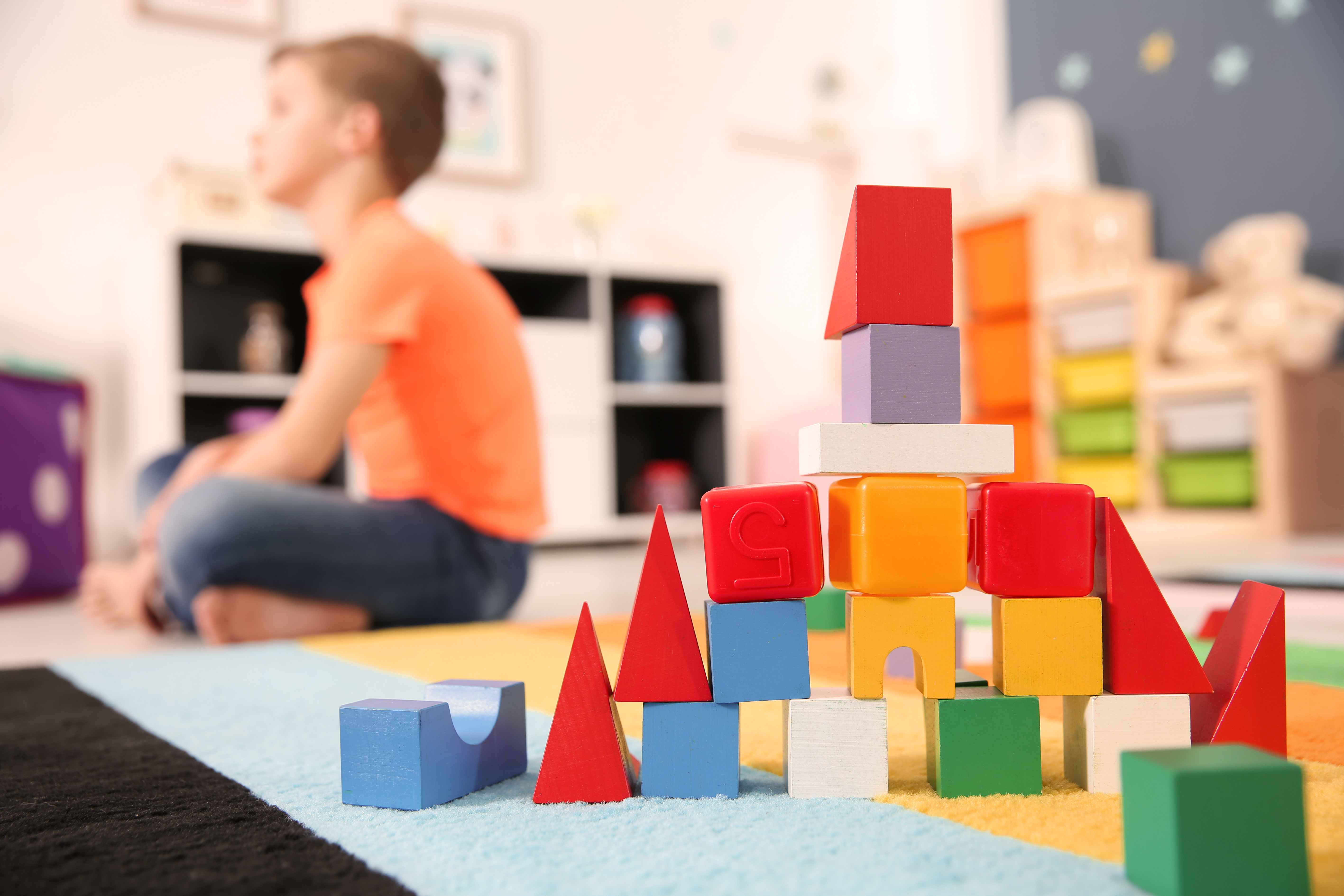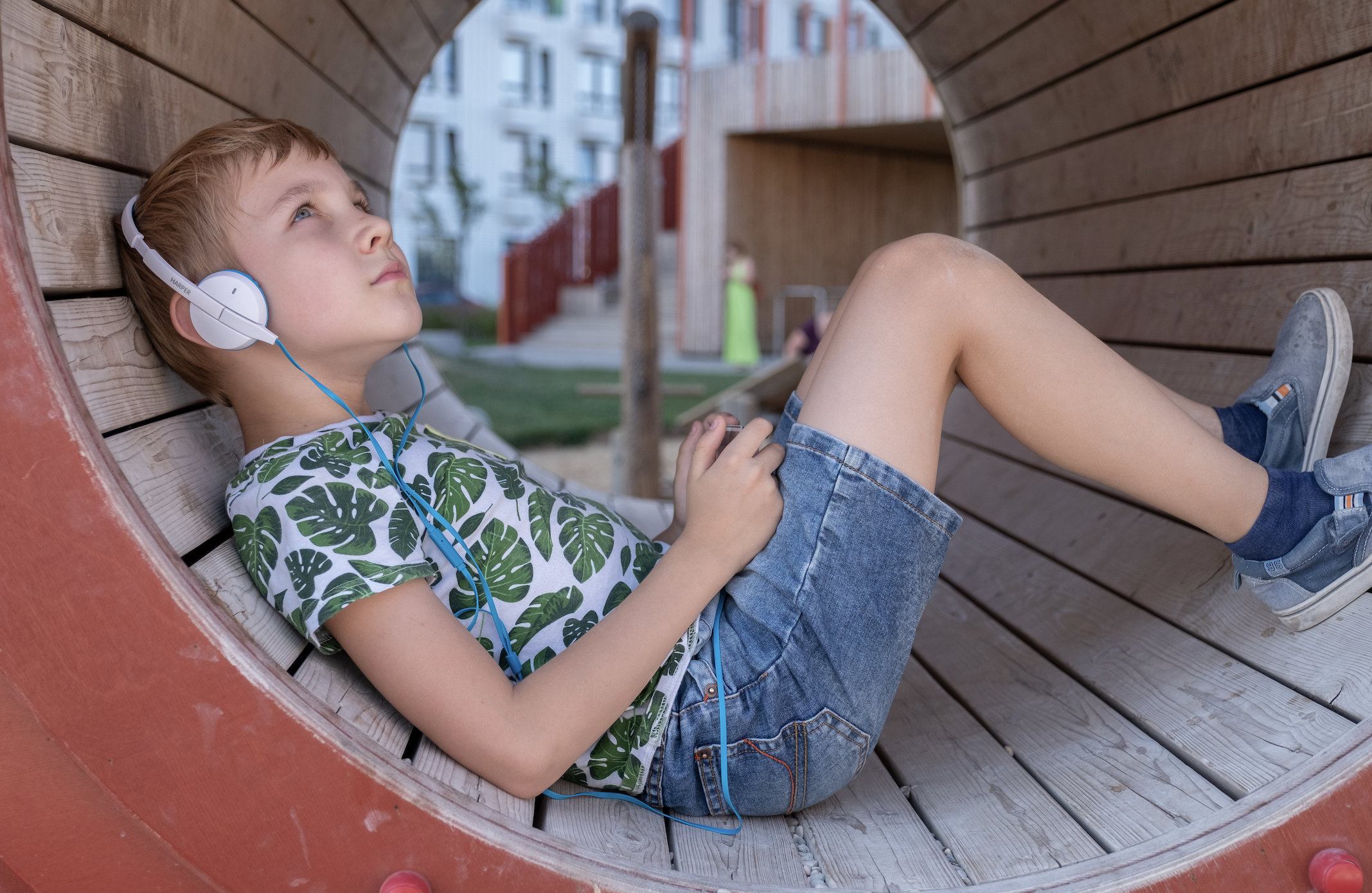How To Accommodate Autistic Children And Adults At Your Play Space

It was recently estimated by the CDC that over 5.4 MILLION adults in the United States (2.21% of American adults) have ASD. The states with the greatest estimated number of adults living with ASD included California (701,669), Texas (449,631), New York (342,280), and Florida (329,131). And similarly, the nationally representative survey suggests that about 1.5 million U.S. kids have autism, or about 1 in 40.
To put it in perspective, most indoor playgrounds serve between 25 and 200 kids per day. So chances are, several people coming through your doors DAILY are on the autism spectrum or are neurodivergent in other ways. So understanding their specific set of needs and what we can do to better accommodate them is important– not just for our bottom lines, but for our humanity as business owners as well.
You may have heard on my “Profitable Play” podcast in episode 43 that I spoke about safely accommodating families with food allergies, and just how much a positive reputation amongst a group of people sharing similar circumstances can mean for your business’ sustainability. Stories of owners and staff going above and beyond for their customers can have major lasting effects and can make you the go-to spot for the thousands or millions of people who are affected by disabilities in your area.
So this article is important for ANYONE currently in the play industry as well as anyone who hopes to enter and become successful. Because just as much as going the extra mile can benefit your business, the inverse can also be true if you do NOT make inclusivity a priority– and word can spread about your lack of empathy quickly.
We now know more about autism and other disabilities than ever, so ignorance is not an excuse anymore to not be inclusive. While I am not an expert on autism, nor am I an occupational therapist, you may know that my amazing (and sweet!) five-year-old son is on the autism spectrum. So these tips are all tried-and-true in my family’s personal experience, and in the experience of other parents in similar situations that I’ve connected with.
I can’t tell you how many times I was SO thrilled and excited to visit an indoor play center, only to have our trip really tainted by a less than stellar experience, one that could have EASILY been prevented or turned around quickly had the owner taken some time to learn about how they can better accommodate disabilities above and beyond the standards we are legally required to.
So that is my goal with this article and the accompanying episodes on my podcast. To allow all children to thrive and flourish and be able to enjoy play spaces happily amongst their peers. And to give their parents the reprieve of a fun afternoon filled with the simple pleasure of play.
And here’s the best part– these tips I am sharing in this article today are simple and inexpensive to implement and can be adapted to your specific space and business vision.
Alright– here are my best tips for better accommodating autistic kids and adults in your indoor playground or play-based business
1. Have A Detailed Video Tour Available Online
I always recommend going through the process a customer would experience visiting your play place and create a video tour on your website from start-to-finish. Not just a glimpse or overview of your space, which most places already have, but instead a detailed step-by-step walkthrough.
Things to include in your showcase include what it's like to park at your facility, which door customers enter through, if strollers and/or car seats are allowed in and where they can be placed, where customers check in and what the steps are, if shoes are to be taken off– all of that.
And if there's anything parents need to do or fill out before their arrival to make the process go quicker and more smoothly, be sure to mention it.
For example, state if parents can pay to reserve a spot in advance and if that’s recommended. If not, show where they can pay upon arrival and what the costs are, what payment methods are accepted, if you have multiple options including packs of play passes and memberships. etc. As a parent it can often be overwhelming making these decisions in the moment, so the more information as you can give them in advance– the better. And YES, you likely already have a pricing page– but there is no harm in reiterating it here.
A video of this process will also help parents identify if there are any snacks or food items/toys around that can be possible triggers for tantrums– especially in neurodivergent children. We can’t be prepared for every scenario, but as a parent, I appreciate knowing as much as possible ahead of time. Allowing parents to bring any items that might help speed this process up or distract their kids from possible triggers will be helpful and appreciated, while benefiting everybody (because who WANTS to hear other kids' tantrums? No one).
You can also show where the bathrooms are and if they are equipped with changing tables that accommodate larger children who may be above normal potty-training age due to their disability. I also like to include whether there are paper towels or hand dryers in the bathroom. I know that in my son’s scenario, for a while I often found myself calling ahead to restaurants and play spaces to ask this question so I can prepare in advance. For almost an entire year, nothing sent our day into a tailspin faster than a super loud bathroom– or my son having an accident due to refusal to use said bathroom due to sensory overload.
Your tour should show if there are any quiet corners, rooms, or sensory toys available– if there's somewhere for parents to nurse/pump, and any other resources your space provides.
For children in wheelchairs, leg braces, or shoes that can’t be removed– make sure to have shoe covers available as well as wheelchair wipes to keep your play area clean and free of any outside debris (or if you’re from a snowy state like I am… SALT!). Include this list of options and where to locate these things (or who to ask) in your video tour (and on your FAQ page!) as well.
I would also explain if there are any places where certain ages can't go or shouldn't access, and if you allow parents to play alongside their child. It’s also helpful for parents to know if you have to close the play area at any specific time or in a certain interval for cleaning– so they can prepare snack and bathroom breaks accordingly (and give their child a time countdown to further prevent tantrums).
I recommend repeating the SAME process (in a separate video) for birthdays as well. I would include information like when food is served, what is served and how, when the play area is closed, if presents are visible and if they'll be opened, if the birthday song will be played, and if candles will be lit.
These small bits of knowledge may seem completely insignificant to most parents– but I assure you, having this information presented in a video format or walk-through style can be an absolute GAME-CHANGER for parents of disabled or neurodivergent children. In fact, many parents have shared that this information can be the difference between them feeling comfortable sending their child to a party– or keeping them home due to the sheer uncertainty of the experience.

Now, repeat the same process for classes and events.
You can start doing this tour process with one area like open play, and then expand from there. I film all the tours that I share on my YouTube with nothing more than my cell phone– so don’t worry about making it fancy or struggling with tech here. DONE is better than perfect.
I use the free version of iMovie to edit my tour clips together– which makes this strategy FREE to implement! It's just going to take a small amount of your time. I recommend embedding these video tours on your website and having a specific section to house them called “video tours” or “space walk-throughs”. You can let visitors know they’re there by displaying them on your main menu. You can also call attention to these tours by sharing frequently on social media and putting links on your frequently asked question page.
Taking these few small steps to share your tours will get current and potential customers to begin spreading the word about this extra mile you're going to help all parents feel more comfortable. Creating these assets for your business will also help empower your team to answer questions more quickly and more fully. For example, whenever someone books a party or registers for play, you can include these tour links in their confirmation emails so everyone is on the same page and there are NO surprises.
This will certainly also help prevent and address negative reviews since that uncertainty element I described is removed– which is more often than not the TRUE source of someone’s negative comments.
2. Have A Small Basket Of Sensory Toys And “Prizes” Available To Your Staff
This is one of the strategies that made the BIGGEST difference in the day-to-day experience for both families visiting our space AND for our staff. If a child is having a complete meltdown or feeling a little bit overstimulated, this tool is designed to help redirect the overstimulated child’s attention and aid their parents in regulating their senses/ emotions.
This is especially important if you have a retail section that can be a source of triggers in children.
Having a basket of sensory toys and/or small prizes can give the parents a little bit of time to figure out how they can de-escalate the tantrum and hopefully turn their visit around and not seriously disturb any other customers (SIDE NOTE: If you’re visiting a play space, tantrums happen. They should not be a source of shame for those involved. Having said that– if your child has ever melted down in a very public place– you know how stressful it can be and how desperate you can get to manage said tantrum)
When I decided to implement this, I simply searched Amazon, Oriental Trading, the Target dollar section, and other inexpensive stores. These are all great places to find a variety of small prizes and toys kids can take home if needed. We always included things like stickers, fidget toys, figurines like dinosaurs and animals– things like that.
You don't have to spend a lot of money on this prize basket, but it’s going to be appreciated by both guests and your staff– who are going to feel much more empowered in tackling tantrums. And again, this may seem like a very small thing for most parents, or even like this is “encouraging” tantrums or whiny behavior. However, if you have a neurodivergent child, you understand a bit more how rapidly tantrums can come on and how HELPLESS you can feel when they become extreme.
I will be talking about “sensory corners/ rooms” at another point in this article– but if you choose to have a basket of sensory toys that are NOT to be taken from your facility– I have seen great finds on Amazon and Sensory Edge that are higher-quality, more durable, and more functional.
So put a little prize basket behind your co-owner or where only staff can access and pull it out if you need to– I can't tell you how many five star reviews we received stating that our staff was so thoughtful and how we really planned ahead for a commonly difficult scenario for parents with this strategy.
3. Consider Hosting “Sensory Friendly Hours”
Now, I fully admit that “Sensory Friendly Hours” have been a little bit controversial within the autism community– because there are really great ways to execute this strategy– and there have also been some very poor examples of utilizing it, despite the indoor play space owner having the BEST of intentions.
Here are just a few tips on how to execute sensory friendly hours so that you're actually benefiting autistic children and adults in your community– with the end goal of avoiding any controversy or detriment to your business.

I gathered these tips both from my experience hosting sensory-friendly hours AND from my experience attending these types of events at other facilities with my autistic son.
- My first tip on how to execute sensory friendly hours is to be inclusive. Especially if you're a business with families who have children under seven–many times children will start showing signs of sensory processing disorder or autism before they are diagnosed. As a business owner, being aware of this and not requiring (or even insinuating) that a formal diagnosis is required, can help tremendously. This can be accomplished by simply changing the verbiage of your event and it’s messaging. Instead of saying “These hours are meant to benefit autistic children”, instead try, “If you think your son or daughter can benefit from a low sensory environment– you are welcome to join us for sensory friendly hours.” Also, make sure that they know that they are not LIMITED or restricted to ONLY visiting during these hours! Let people know, “hey, this is just one more option that's available to you.” Be cognizant of way you word your sensory-friendly hours and events and make sure you really train your staff in compassion. Families will take notice if they feel like they are being isolated within your community.
- My next tip is to research and actually make your sensory friendly hours sensory-friendly, which is another huge mistake I see business owners make. They offer these special hours outside of open-play, but then won't actually adapt their business practices to be more accommodating for children with sensory processing disorders or autism. An example of how you can really walk-the-walk when it comes to sensory-friendly hours is to sell limited tickets! Make sure you're capping these hours at a very small number of children. Many people who have children that can benefit from this type of environment are understanding and willing to pay extra for a smaller group size.
- Also, be sure to either play very low, very calming music– or no music at all. We recently went to a sensory-friendly hour at a gymnastics center, and the lights were super bright and they were blasting Disney music. I ended up pulling the owner aside and making the suggestion that they turn off the music– which they did right away. And let me tell you, the mood and the entire room changed immediately. The kids were less hyperactive and were having more fun with less yelling and screaming. And several parents (and the staff there!) thanked me for making the suggestion. Another tip to execute sensory friendly hours is to have out sensory bins or other fine motor activities, such as puzzles/fidget toys. A lot of times, kids with sensory processing disorder or autism just need to take a little break from being in a crowd or engaging with others. This gives them something else to focus on.
- Next tip is to really train your staff. Not just on the more common tendencies of autistic kids and adults, but in their language and the words that they use. Do your research, and invest in an expert if you need to.
- My final suggestion is regarding how to properly market sensory-friendly hours. A lot of times businesses will try hosting specific sensory-friendly hours but fail to market it well, then think “well, nobody's interested, and it's not worth doing.”Here are some tips on how you can actually sell out your sensory friendly hours. First, as I already mentioned (though it’s worth reiterating), make sure people understand that your sensory friendly hours are open to any family or any child who could benefit from that lower key environment. Make sure people know that their child doesn't need a formal diagnosis in order to attend, especially if you serve younger children who may not have had the opportunity to even be evaluated yet. Next, if you know anybody who has an autistic child or a child with sensory processing disorder, ask them to share your event. Always make an event on your Facebook page, because anytime somebody responds, “going or interested”, it will pop that event right in their friends’ newsfeeds. And chances are, they have several connections online who can similarly benefit from your event. Another tip is to share the event with any schools in the area that accommodate the autistic community. I know that my son’s school, for example, is always looking out for opportunities for their students to have a positive experience in their community. My last tip for marketing your sensory friendly hours is to keep it consistent. For example, we always chose the second Tuesday of every month for our events which allowed families to plan ahead and mark it on their calendars. Towards the end of our business, before we sold it, we did start adding additional time slots, but we always kept that original time slot so that people could depend on it.
4. Embrace Universal Design
Universal Design is generally defined as, “the design and composition of an environment so that it can be accessed, understood, and used to the greatest extent possible by all people, regardless of their age, size, ability or disability.”
As the definition makes clear, while universal design promotes access for individuals with disabilities, it also benefits many others within our community– hence the concept being dubbed as “universal”. And while I admittedly have enjoyed many play places who created their business specifically as a destination for families with autistic children, I think that is the “next best thing”-- the BEST case-scenario being ALL play spaces adapting a design that makes them as accessible to all as possible.
There is a key mindset shift that we as business owners need to make to truly be inclusive and it all revolves around this concept of “universal design”. In this spirit, here are some tips I have gathered from experts in universal design:
- My first tip is that whenever you have a sign that you need or want a child to be able to understand, make sure you use images and not just words. This one might seem like a no-brainer, but I can't tell you how many play spaces I've visited that have signs with just words, positioned at a child’s eye-level. A lot of these facilities accommodate kids under six years old, who likely can't read yet. And, many times, autistic kids or those facing other disabilities begin to read a little bit later than their peers, or may be non-verbal. So using imagery in signage is really im – for all. I was recently at an indoor play space when I was doing a YouTube tour and the owner mentioned to me that she's having a lot of trouble keeping some of the older kids out of the baby area. She pointed to the sign and it said, no kids over two in this area.

- My second tip is to try to have a designated “quiet corner”, or better-yet, a “quiet / sensory-friendly room” available to those who need it at all times. We weren't able to have a quiet room due to our size and our setup (though I do wish I could hop in a time machine and find the space to make one work). We instead had an area in the corner that was versatile and what I’d consider “multi-use”, though most times it functioned as a “quiet corner”. Shortly after opening, I realized that kids sometimes get overwhelmed or just need a minute of cool-down time away from the chaos of the play area. This was appreciated by parents of all the children who visited our space, and is a great example of universal design in use. This was on the cafe=side of our facility, not in the play area. It gave parents a place to take their kids that are feeling a little bit overwhelmed or need a break or fine-motor activity to help regulate their emotions and senses. I always recommend having a variety of things available because, as we know, all kids are different and have different needs and interests. So we had a lot of calming things. I love when businesses have those big lava lamp fixtures, either on their walls or standing up, we had those and we used to have a little electronic fish bowl that just played calming music. Some favorite fixtures in this area were wall-secured lava lamps, fidget toys, sensory balls and bottles, and wall fixtures that encouraged that fine-motor play. And– by the way– I LOVE wall-toys for play spaces in ALL areas. You can place them at check-in, in the bathrooms, in your quiet corner, along your play area wall– anywhere where kiddos might need their attention or focus redirected. Wall toys are also extremely helpful for kids in wheelchairs or other physical disabilities who are unable to use some of the gross-motor structures, as they would typically be right at eye level of the wall toys.
As I stated in the beginning of this article– we know more about inclusive practices than ever in 2022 and beyond, so there is truly NO excuse for not adapting them. I am so thrilled to see more and more play spaces (and especially those going through my Play Cafe Academy program!) prioritizing this and creating spaces with these concepts and tips at the forefront.



